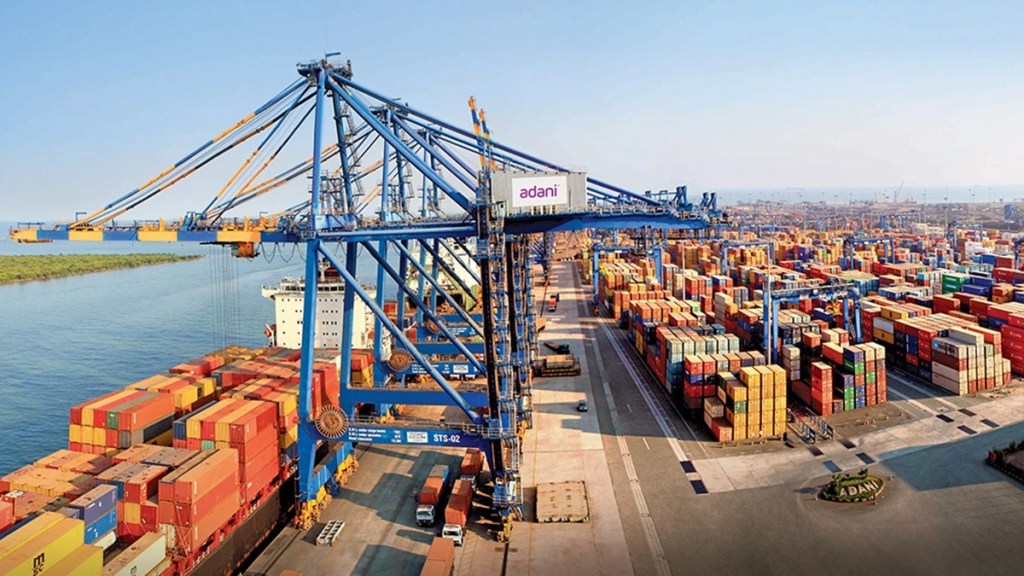– By K Mohandas
Mundra, India’s biggest port, is turning 25 this month. The Adani Group started it as a captive jetty in 1998, added an SPM in 2001 and the first container terminal in 2003, and continued to develop the cargo-handling capacities for various cargos using the best of technologies; it has now emerged as India’s top port in terms of cargo handling. The Mundra Port handled over 155 MMT (Million Metric Tons) in FY23, nearly 11% of India’s maritime cargo. The growth story of the Port over the last quarter century represents several growth stories – the development of Indian infrastructure, private participation in infrastructure development, the Gujarat model of development, the emergence of the Adani group as a major player in multiple sectors, and the port-led development of a region.
Important ports of the country during the British period were Bombay, Madras, and Calcutta. They were made statutory entities in the second half of the 19th century and contributed to the cities’ growth, which in turn helped the ports to grow. What happened first is debatable – did the chicken or the egg come first? However, modern cities have strong demands from ports – handle only clean cargo, do not use city roads for cargo movement, and hand over port land for urban socio-economic activities. Independent India chose to build ports in remote places like Paradeep and Kandla, and these two ports are now vying for the top position among government ports, leaving the city ports behind.
Mundra Port started at a strategic location, the entrance to the Gulf of Kutch, where the draft is deep, and accessibility is easy. The advantage of ports in Kutch is that they provide the nearest maritime gateway to the vast North Indian hinterland. Rail and road connectivity is critical for deriving the logistical benefit of this proximity. They invested early in a rail system and derived the advantage of connecting it to the national rail network so that cargo could be moved from/to any location in India without multiple handling. The Port is also connected to the National Highways network through two State Highways.
What is perhaps inadequate is air connectivity. The airports in Kandla and Bhuj have hardly one flight a day. The Adani Group, which is the biggest airport operator in the country, could very well develop a new commercial airport in the Kutch region. A new airport can be a cargo hub as well as a passenger airport. Infrastructure should ideally precede demand; the presence of a planned facility automatically leads to demand, and there are investors capable of innovative projects to attract more people to the region.
The development of Mundra from wasteland and nondescript villages to a vibrant Municipal town is a secondary strand. The Adani Group, through the Adani Foundation, has displayed remarkable social commitment by developing the small towns and villages nearby. They have developed educational, healthcare, and medical facilities and supported the local arts and crafts. The support provided to students by giving scholarships and sponsoring them for higher studies could bring about a welcome change in the human resources of the region. The skill development programmes provide opportunities for direct and indirect employment; jobs are available in the Adani Group itself, with its activities spread across sectors as diverse as port, aviation infrastructure, thermal energy, non-conventional energy, food and beverages, gas distribution, and more to come.
Corporate Social Responsibility became a statutory obligation only after the Companies Act 2013 came into force. Several doyens of Indian industry were already into socially beneficial and charitable activities. Gautam Adani needs to be complimented for his vision to see the local economic development as a sine qua non for the development of the port. The preference of the ports would normally be to invest in activities that generate cargo; investment in social infrastructure needs a different form of social commitment. The Adani Group did both – they developed India’s largest port-based multi-product industrial park and simultaneously contributed to the development of a whole region.
In Mundra, the chicken–egg question is irrelevant. Clearly, it is a port-driven economy, with a strong ripple effect throughout the region. The city will continue to grow, and the urban character will be reinforced as the economic activities will be in the secondary (manufacturing) and tertiary (services) sectors. Even a hundred years later, the city is unlikely to see the port as a nuisance because of the imaginative planning for co-existence. For any port, the handling of coal is a formidable challenge; to Mundra’s credit, they could bag international recognition as a green port, way back in 2008.
With a massive hinterland covering Delhi, Punjab, Haryana, UP, and Rajasthan, and a near hinterland in the industrially developed and further developing Gujarat, Mundra Port will continue to grow. The Adani Group’s acquisitions of the container terminal in Colombo and the port in Haifa (Israel) will add to their role in global maritime transportation. The proposed India – Middle East – Europe Economic Corridor connecting India’s west coast to Europe through UAE, Saudi Arabia, Israel, and Greece is an ambitious collaborative project for multi-modal transportation with economic benefits for all the participants; this would run parallel to Chinese BRI. The Adani Group can play a key role in this, as the owners of Mundra Port as well as Haifa Port.
(K Mohandas is a former IAS officer who served as a Secretary in the Ministry of Shipping and Overseas Indian Affairs.)
(Disclaimer: Views expressed are personal and do not reflect the official position or policy of Financial Express Online. Reproducing this content without permission is prohibited.)

